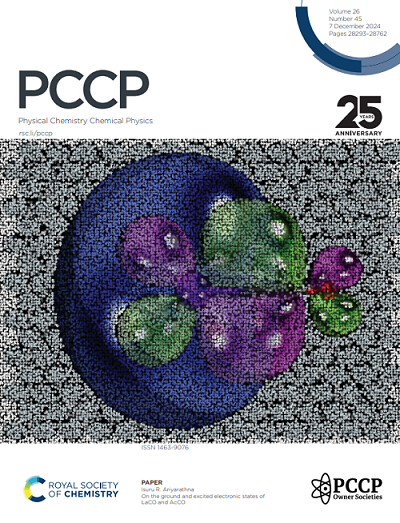Deciphering the full-length PrPC(23-231) Receptor and Characterizing the Size/Subphase-Dependent Impact of Aβ Oligomers on the PrPC(23-231) Receptor: Insights from Molecular Dynamics Simulations
IF 2.9
3区 化学
Q3 CHEMISTRY, PHYSICAL
引用次数: 0
Abstract
As one of the cell surface receptors, cellular prion protein (PrPC) can bind Aβ oligomers (AβOs) and attenuate its neurotoxicity. However, there is still considerable controversy regarding the PrPC-AβO interaction, due to the polymorphism and varying size of the AβO species and void of full-length PrPC 3D structure. To solve the problem, we first complemented the missing residues in the residue-lacking crystal structure of PrPC and determine a 3D full-length PrPC receptor using “Alphafold2”. We subsequently investigated the complexes formed between the PrPC receptors—both the full-length and those missing the N-terminus—and a variety of Aβ42 species, including Aβ42 monomers, Aβ oligomers (AβOs) of varying sizes across two phases, as well as Aβ42 fibrils (AβFs), using molecular dynamics simulations. The simulated results indicate that the full-length PrPC receptor (23-231) employs a cavity, formed by its amino acid residues 44-51 and AA 95-110 regions, for Aβ42 binding. In contrast, the crystal structure of the PrPC receptor, typically lacking the N-terminal sequence (amino acids 23-87), provides a binding cavity composed of amino acids 95-110 and the C-terminal residues 131-161 to bind Aβ42, which is consistent with the diverse experimental outcomes observed (Nature 2009, 457(7233), 1128-1132; J. Am. Chem. Soc. 2022, 144(21), 9264-9270). This underscores the necessity of the novel full-length PrPC (PrPC23-231) 3D model for replicating experimental findings accurately. Additionally, we utilized both the full-length and truncated models of the PrPC receptor to clarify its disruptive effects on the growth of Aβ42 secondary nuclei structures (AβF) and its inhibitory impact on the disordered AβOs across two phases. This work provides molecular-level insights into the PrP-Aβ interaction, facilitating model selection for future experimental studies and identifying molecular targets for designing drugs intended to alleviate the toxicity of Aβ42 oligomers towards the PrPC receptor.求助全文
约1分钟内获得全文
求助全文
来源期刊

Physical Chemistry Chemical Physics
化学-物理:原子、分子和化学物理
CiteScore
5.50
自引率
9.10%
发文量
2675
审稿时长
2.0 months
期刊介绍:
Physical Chemistry Chemical Physics (PCCP) is an international journal co-owned by 19 physical chemistry and physics societies from around the world. This journal publishes original, cutting-edge research in physical chemistry, chemical physics and biophysical chemistry. To be suitable for publication in PCCP, articles must include significant innovation and/or insight into physical chemistry; this is the most important criterion that reviewers and Editors will judge against when evaluating submissions.
The journal has a broad scope and welcomes contributions spanning experiment, theory, computation and data science. Topical coverage includes spectroscopy, dynamics, kinetics, statistical mechanics, thermodynamics, electrochemistry, catalysis, surface science, quantum mechanics, quantum computing and machine learning. Interdisciplinary research areas such as polymers and soft matter, materials, nanoscience, energy, surfaces/interfaces, and biophysical chemistry are welcomed if they demonstrate significant innovation and/or insight into physical chemistry. Joined experimental/theoretical studies are particularly appreciated when complementary and based on up-to-date approaches.
 求助内容:
求助内容: 应助结果提醒方式:
应助结果提醒方式:


